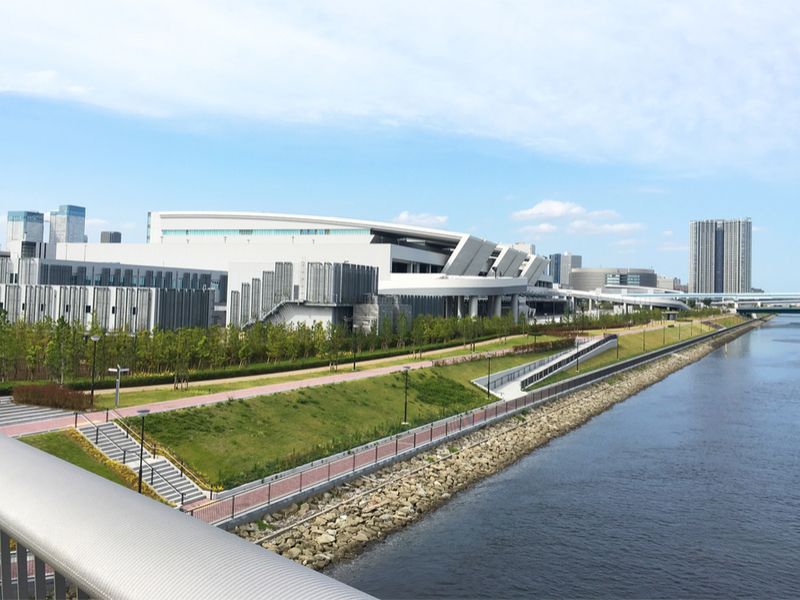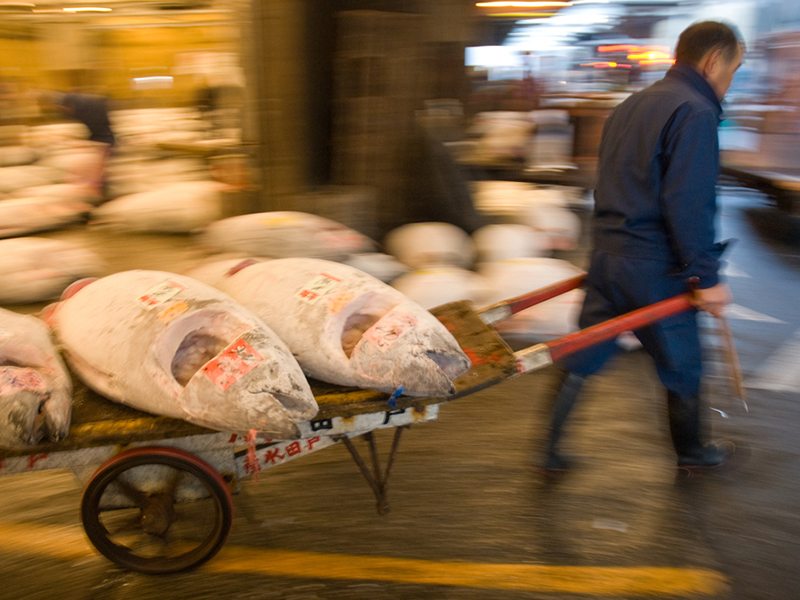Affectionately known as “Japan’s Kitchen”, Tsukiji Market’s inner market — where most of the seafood wholesalers are based — is closing its doors on October 6, 2018 after 83 years of business at the Tsukiji site. While the outer market and its restaurants will remain, there will most certainly be a dramatic change in the atmosphere of the area. Signaling the move, Tsukiji held its last public tuna auction on September 15. Hordes of people lined up hours before opening to catch a glimpse of the famous affair — so many that the line had to be cut off at 2am, four hours before the auction took place.
A Long Time Coming
Tsukiji’s inner market will close completely on October 6 ahead of its relocation to Toyosu, which will officially open for business on October 11. The move has been a long and arduous one for all parties involved, as discussions to modernize Tsukiji have been going on for over 50 years. Plans to renovate the site were made in 1986 and construction started in 1991 but was abandoned midway in 1996 as it proved to be too expensive and time-consuming. It was finally decided in 2001 that the market would simply have to move elsewhere.
Plans to move the market went ahead and Toyosu seemed like a good location on paper: it was more spacious at 1.7 times Tsukiji’s size, the area is closed (making it easier to regulate temperatures) and there is state of the art equipment on site. The move was originally slated for November 2016, but Tokyo governor Yuriko Koike halted the relocation only two months before it was set to occur after arsenic and other pollutants were found in the groundwater at the new site, which formerly housed a Tokyo Gas Co. factory. She later decided to make use of both Toyosu and Tsukiji sites. The move, including the cost of soil pollution clean up, is now estimated at about 600 billion yen.
While there has never been any doubt that something needed to be done about the Tsukiji site, it has been rife with controversy. The market handles 25% of Japan’s total wholesale fish and about 1.6 billion yen’s worth of seafood goes through the market every day. For many years the site has not been ideal — the open-air facility makes it difficult to regulate temperatures, especially in summer, and the storage facilities are too small for such a massive enterprise. More pressingly, the venue is considered unfit in terms of earthquake resistance, fire safety, and sanitation.

Toyosu Market
Protests Continue As Relocation Nears
Despite this, Tsukiji-related businesses still protest the relocation of the market. One of the most vocal groups is the Tsukiji Okamisan Kai, an association of women workers at the market. They have written an open letter to the International Olympic Committee and invite visitors to contact the Tokyo government in order to stop the move.
Wholesalers, fishmongers, and the Tsukiji Okamisan Kai have many concerns, which they feel haven’t been met and protesters have filed a legal suit to prevent the relocation. On September 30, about 300 people gathered to protest the move once more, shouting “Toyosu No No No!” and waving banners, voicing their anger over the destruction of the Tokyo landmark.
Soil Pollution Measures and Consumer Trust
Though the Toyosu site was marked as safe in July this year, many people feel that the measures are not enough and that the relocation spot was not appropriate in the first place. As late as April 2018, the levels of benzene were 130 times the limit set by environmental standards. On top of that, after repeated delays and the discovery of high levels contaminants at the new site, wholesalers are worried that consumer trust has been destroyed and may not be regained. There are also complaints that with the move so far away from central Tokyo, restaurant owners and other buyers will choose to go elsewhere for their fish.
On-Site Planning Issues
Tsukiji Market is too small and overcrowded for the amount of business it deals with, so the new land should be at least 1.5 times larger. Though the new site technically fulfills this requirement at almost twice the size of Tsukiji, Toyosu is split up into three parts with large roads between them, meaning the areas cannot be used as a single space.
Transportation and Logistics Issues
The Yurikamome train doesn’t have the capacity to deal with the number of people working and visiting the new market. For some, it will require an extra hour of travel, meaning they can’t get there early enough. Concerns include a shortage of parking space and congestion, making it inconvenient for customers buying in bulk.
Also, many involved complain that the structure at Toyosu can’t accommodate the delivery carts and 2,000 turret trucks that zip around the market, and there are not enough elevators for smooth logistics.
Ratatouille Returns
While not an issue with the new site, the relocation does mean the rats residing in Tsukiji will be displaced once their main source of food disappears. Many fear they’ll spread into surrounding areas, such as Ginza. No one seems to be able to estimate the exact number of rats in the area, but dealing with the issue is already estimated to cost 35 million yen and major measures are being put into place to avoid a mass exodus from the market area. Last year 1,195 rats were caught on site in the space of one year. But during the long a weekend of September 22-24, a total of 30 kilos of rat poison and 7,000 glue mouse traps were used to catch 215 rats over three days. The major battle will take place after the market closes and the rodents sense a change in the area.
What Happens Next?
Despite protests, everything points to the move going forward as planned. To retain the Tsukiji neighborhood’s reputation for being a haven of quality produce, Tsukiji Uogashi, another market, opened next to the old Tsukiji location on October 1. Local business owners have joined up with Tsukiji outer market stores to help revitalize business in the area, as they will sell to both the public and businesses.
Tokyo governor Koike has also expressed interest in preserving Tsukiji’s brand by creating a food theme park to keep the tourists coming to the area. This idea has been put on hold, to focus on Tsukiji’s comeuppance as a transport hub ahead of the Tokyo 2020 Olympics.
As for Toyosu, live tuna auctions will be open to the public from the first day of business, October 11. Unlike the Tsukiji version, it won’t be an up-close affair — visitors will view the proceedings from behind glass above the auction area, but it will accommodate more people. Further development of the site will make it tourist-friendly, with plans to incorporate a hotel and a hot spring resort in the future.
For Toyosu Market’s address and website details, see our Concierge listing.









